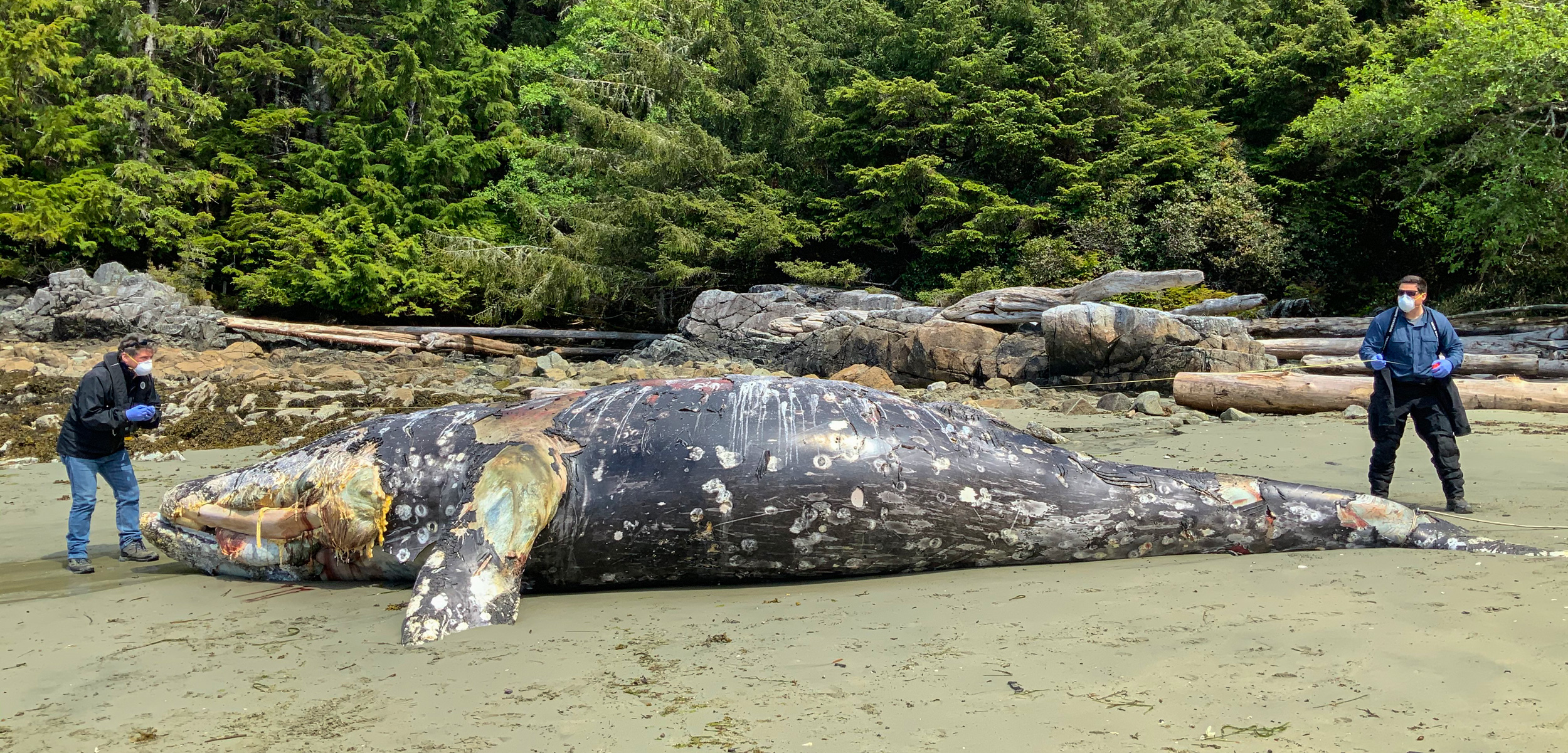Necropsies Unveil More about Mass Gray Whale Deaths
Hundreds of gray whales in the eastern Pacific Ocean have died since last year, and scientists are beginning to understand why.
Article body copy
When 215 gray whales washed up dead last year along the west coast of North America, researchers wondered whether the species had recovered from the commercial whaling era and become a victim of its own success—the ocean no longer capable of feeding all those gaping mouths.
But a new study for the International Whaling Commission finds that despite widespread evidence of malnutrition, other factors such as ship strikes and killer whale attacks played a significant role in the gray whale deaths from Mexico to Alaska.
Further, those documented strandings are thought to represent only a fraction of the gray whales that died last year in the eastern North Pacific. “Some may be stuck in oceanic gyres,” while others may have sunk, says the study’s lead author, Stephen Raverty, a veterinary pathologist with British Columbia’s Ministry of Agriculture.
Of the dead gray whales that were found, 40 percent were adults and 46 percent were subadults, while yearlings made up 11 percent and calves three percent.
Necropsies on 50 of the whales suggest that 19 died from killer whale attacks—mainly in Alaska waters—while another eight had rake marks indicative of such attacks. Ten individuals, mostly in California, had injuries consistent with vessel or propeller strikes. The exact cause of death for the rest remains unknown, although one showed evidence of past entanglement with fishing gear.
Eighty-nine of the 215 stranded whales were rated for body condition: 29 were emaciated and 38 were thin, while only 22 were in average-to-good condition. Gray whales are typically low on fat reserves during their northward spring migration, but conditions were worse last year. At least half of the live gray whales studied in Mexico showed signs of poor nutrition compared with about 10 percent in prior years.
The whales faced more challenges on their northern feeding grounds.
According to the researchers, an unprecedented loss of sea ice and increased ocean temperatures in the Bering and Chukchi Seas from 2017 to 2019 may have factored into the unusual mortality event. Algae living on sea ice are known to fertilize the seafloor and provide nutrition to invertebrates that are consumed by gray whales.
If whales looked for food in new areas, they may have also been at a greater risk from shipping, commercial fisheries, killer whale predation, even exposure to new pathogens or toxins.
Thomas Doniol-Valcroze, head of the cetacean research program for Fisheries and Oceans Canada on the west coast, did not participate in the gray whale study, but says he is impressed by the international effort that accomplished 50 necropsies. A total of 23 people from Canada, the United States, and Mexico contributed to the study.
Doniol-Valcroze believes more than one hypothesis to explain the die-off of gray whales last year may be valid. “If a population is close to its limit, then a bad year in terms of feeding conditions will affect a larger part of the population,” he says.
It’s also possible that whales, weakened by poor feeding conditions, are more susceptible to predation by killer whales, which themselves have become more common in Arctic waters as a result of climate change, he says.
This is not the first large-scale gray whale die-off. From 1999 to 2000, a total of 651 whales died on the US west coast, compared with an average annual of 41 in the preceding years. Researchers suspected that poor nutrition played a role, but few necropsies were conducted and no definitive conclusions reached. Only one ship strike was documented during that die-off.
Raverty and his colleagues recommend in their study that drones be used to help assess the physical status of gray whales during their southerly migration. They also urge that environmental conditions, including prey availability and oceanographic and meteorological factors, be considered when assessing the species’ population status.
Meanwhile, the current die-off continues. At least another 114 gray whales have stranded so far in 2020, mainly in Mexico. In May, Raverty conducted a necropsy on a young male gray whale in Barkley Sound, on the west coast of Vancouver Island, British Columbia, that may have been attacked by transient killer whales. “The right side of the mouth and jaw were exposed,” Raverty says. “It looked like teeth marks.”
Gray whales are thought to number 27,000 in the eastern North Pacific. They are considered a species of special concern by the Canadian government, though they are no longer awarded any special protection in the United States.

